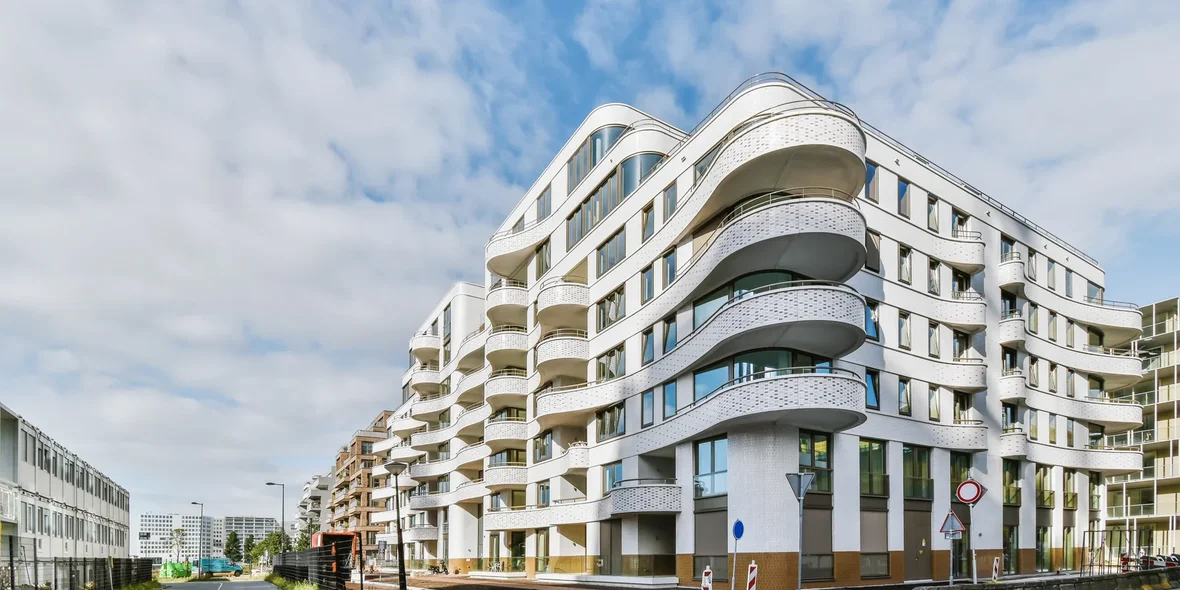
What is a Club House?
A club-type house is a modern format of luxury housing that is a low-rise apartment building with a limited number of apartments, expanded infrastructure, and a high level of security. Such houses combine the comfort of private housing with the advantages of an apartment building, creating the unique atmosphere of a gated community for a select few.
History of Origin
The concept of clubhouses originated in the United States in the 1960s as an alternative to traditional apartment buildings and cottage communities. The idea was to create luxury housing that would unite people of similar social status and interests.
In Russia, the first club-type houses appeared in the late 1990s and early 2000s, mainly in Moscow and St. Petersburg. They quickly gained popularity among wealthy buyers who value privacy and comfort.
Main Features
Club-type houses have a number of specific features:
- Low-rise (usually 3–7 floors).
- Limited number of apartments (from 5 to 50).
- Large area of apartments (from 100 sq.m.).
- Individual layouts.
- High-quality finishing of common areas.
- Underground parking.
- Closed protected area.
- Expanded infrastructure for residents.
Architectural Features
The architecture of club-type houses is often distinguished by sophistication and an individual approach:
- Unique facade design.
- Use of premium materials.
- Panoramic glazing.
- Spacious entrance areas.
- Landscaping of the surrounding area.
- Terraces and penthouses on the upper floors.
Many club-type houses are designed by famous architects and become noticeable elements of urban development.
Layout and Types of Apartments
Club-type houses usually offer the following housing options:
- Spacious apartments (from 100 to 300 sq.m.).
- Duplex apartment.
- Penthouses with private terraces.
- Apartments with a separate entrance on the first floors.
Layouts often provide for the possibility of individual adaptation to the needs of a particular owner.
Infrastructure and Services
Club-type houses are usually built in prestigious areas of the city. In some cases, club-type houses form entire blocks of elite buildings.
An important feature of club-type houses is their developed internal infrastructure:
- Fitness center and spa area.
- Children's playroom.
- Conference room.
- Lounge area for residents to relax and communicate.
- Cigar room.
- Wine cellar.
- Winter garden.
In addition, residents are often provided with additional services: concierge service, cleaning services, security service, nanny and pet walking services, delivery of groceries, and prepared meals.
Special attention is paid to ensuring security in club-type houses: 24-hour security, video surveillance systems, access control to the territory, modern fire safety systems, and safe rooms in apartments.
An important feature of club-type houses is the formation of a special social environment:
- Neighborhood of people of similar social status.
- Opportunities for informal communication.
- Carrying out joint events for residents.
- Forming a sense of community and belonging to an elite club.
Legal Features
The management of club-type houses has a number of legal features, including:
- Often, a partnership of real estate owners (TSN) is created.
- Special rules of residence are being developed.
- Restrictions may be placed on the rental of apartments.
- Special requirements for repair work.
These measures are aimed at maintaining a high level of comfort and safety for all residents.
Notable Projects
Some club-type houses have become iconic properties in the luxury real estate market:
- “Club house on Kotelnicheskaya embankment” in Moscow.
- “Privilege” in St. Petersburg.
- “Residence on Pokrovsky Boulevard” in Moscow.
- “Mansion of Kushelev-Bezborodko” in St. Petersburg.
- “Bunin Club House” in Moscow.
These projects often become role models in the field of luxury housing construction.
Development trends and market impact
The concept of clubhouses continues to evolve:
- Increased attention to environmental friendliness and energy efficiency.
- Integration of smart home systems.
- Development of the concept of serviced apartments.
- Creation of themed club-type houses (for lovers of art, sports, etc.).
- Expanding the geography of construction beyond large cities.
Club-type houses occupy a special niche in the real estate market:
- Unlike cottage villages, they are located within the city limits.
- Compared to ordinary luxury houses, they offer a more intimate atmosphere.
- Unlike aparthotels, they are intended for permanent residence.
- Compared to townhouses, they provide a higher level of security and service.
- Comfort Class Housing: Features and Characteristics
- Real Estate Purchase and Sale Agreement: What You Need to Know When Concluding It
- Permanent residence: peculiarities of obtaining it
- What a Developer Does: From Finding Land to Selling Properties
- Penthouses with a View: Essentials for Buying Luxury High-Rise Apartments








